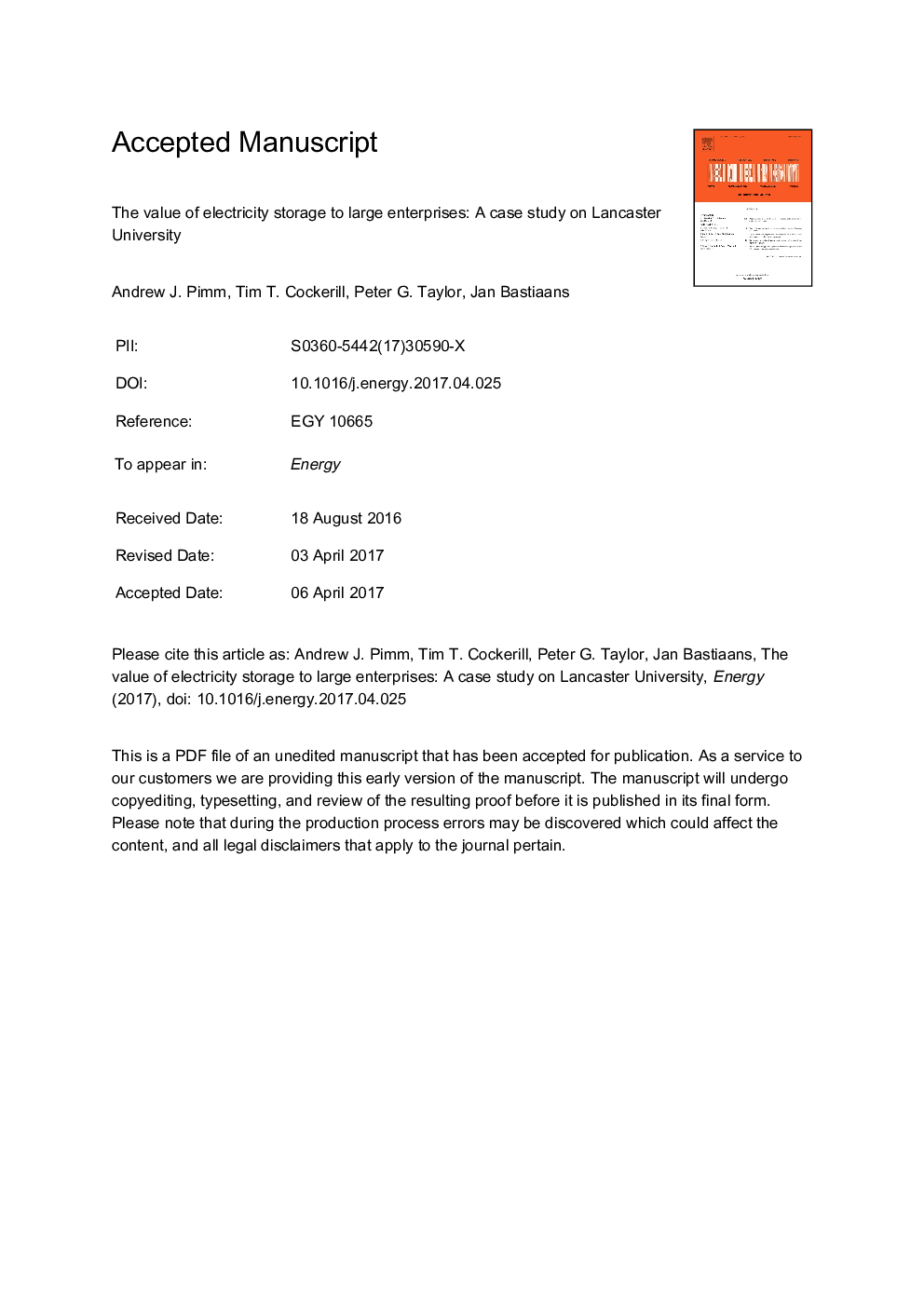| Article ID | Journal | Published Year | Pages | File Type |
|---|---|---|---|---|
| 5476035 | Energy | 2017 | 34 Pages |
Abstract
Co-locating electricity storage with demand has significant potential to increase consumption of locally-generated electricity, defer infrastructure investments, and contribute to the task of balancing supply and demand on the wider network. In the UK, unlike domestic consumers, large enterprises are already incentivised to reduce peak demand through exposure to time- and demand-dependent network charges. This paper considers the potential of electricity storage to reduce the bills of large enterprises, focusing on Lancaster University as a case study. Through analysis of Lancaster University's recent demand and generation data and current and future charges, it is shown that recent widening of red distribution charge time bands has reduced the value of electricity storage to enterprises, and that in 2015 an enterprise such as Lancaster University could have expected electricity storage to deliver annual savings of around £27 per kWh of storage capacity, by reducing network charges. An analysis of these charges around Great Britain shows that the opportunity for storage to provide savings to enterprises is greatest in the south-west (at least £70/kWh.yr in 2017) and lowest in the north of Scotland (at least £20/kWh.yr). Whether investment in storage provides positive value to enterprises is shown to be strongly dependent upon location.
Related Topics
Physical Sciences and Engineering
Energy
Energy (General)
Authors
Andrew J. Pimm, Tim T. Cockerill, Peter G. Taylor, Jan Bastiaans,
